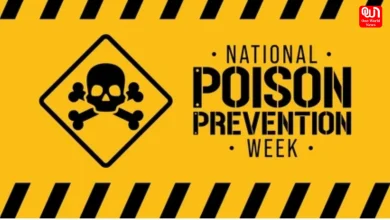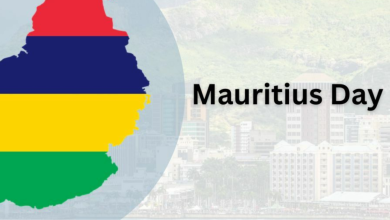Kaam Ki Baat: What is Mission Indradhasnush and how effective it is?

Mission Indradhanush is the flagship programme which aims to provide immunization
Kaam Ki Baat cruises through its mission to explore various health schemes of the country. Today, we will take a look at Mission Indradhanush, a programme to accelerate the process of immunization.
https://www.instagram.com/p/CFd4qe1nO7C/
What is Mission IndraDhanush?
The mission was launched by the Modi Government on 25th December 2014, the first year of their inception. The motive was to accelerate the process of immunization by covering 5 per cent or more children every year. The immunization process had increased just 4 per cent from 61 per cent to 65 per cent, indicating only one per cent increase every year.
The aim of the Mission Indradhanush is to cover all those children who have not been vaccinated or partially vaccinated against vaccine-preventable diseases. India’s Universal Immunisation Program (UIP) provides free vaccines to children to 26 million children every year against 12 life-threatening diseases. The vaccine is given free of cost against Polio, Tuberculosis, Hepatitis B, Diptheria, Tetanus, Meningitis, Pneumonia, Measles, Japanese Encephalitis (IPV, rotavirus vaccine, adult JE vaccine, pneumococcal conjugate vaccine (PCV), Rubella and Rotavirus diarrhoea.
History of Immunization in India
Immunization program was started in 1978 as “Expanded Programme of Immunization’ by the Health Ministry of India. The program was modified as ‘Universal Immunization Programme’ (UIP), the largest health program in the world, which covered all districts in a phased manner in 1989-90.
Implementation of Mission Indradhanush
The systematic and focused and immunization drive is a “catch-up” campaign where the aim is to cover all the children who are partially vaccinated or unvaccinated. Along with the children, pregnant women are given zinc tablets, ORS packets, tetanus vaccine and Vitamin A doses. Zinc tablets are given for the use in the event of severe diarrhea and Vitamin A doses are given to boost the immunity of the child.
In the first phase of Mission of Indradhanush (in April 2015), more than 75 lakh children were vaccinated in which 20 lakh children were fully vaccinated and over 20 lakh pregnant women were given tetanus toxoid vaccine.
In the second phase, the mission covered 352 districts (279 medium focus districts and 73 high focus districts). 4 special drives of a weeklong duration were taken out in October 2015.
In total, phase 1 and phase 2, a total of 1.48 crore children and 38 lakh pregnant women were fully immunized. More than 3.66 crore antigens were administered in 21.3 lakh sessions that were held throughout the country.
The phase 3 of Mission Indradhanish was started on 7 April 2016 that covered 216 districts. 4 intensified immunization rounds of drive lasting for 7 days were conducted between April to July 2016 in all the 216 districts.
Phase 4 of Mission Indradhanush was launched in February 2017 that covered the North-eastern states of Assam, Meghalaya, Arunachal Pradesh, Sikkim, Nagaland, Meghalaya, Manipur and Tripura.
In the four phases, more than 2.53 crore children and 68 lakh pregnant women have been reached with life-saving vaccines.
The Health and Family Welfare Ministry has received support from UNICEF, Rotary International and other donor partners during the mission. Sturdy mechanisms, interpersonal communication, mass media of evaluating and monitoring the scheme have played an important role in the implementation of Mission Indradhanush.
Read more: Kaam Ki Baat: How effective is NHM’s Rashtriya Bal Swastha Karyakram
Areas Under Focus
The programme focusses on high-risk settlements identified by the polio eradication program especially those areas which have low coverage due to demographic, geographic, ethnic and other operational challenges. Government had a special focus in these areas because there was evidence that most of the unvaccinated and partially vaccinated children were concentrated in these areas.
Urban slums with migration, brick kilns, nomads, construction sites, fisherman villages, riverine villages with shifting population, tribal population, the forested population are some of the areas which were identified by the polio eradication programme.
Those areas are also in focus which has low routine immunization coverage, areas with missed Routine Immunization sessions, areas with vacant sub-centres, and hamlets, dhanis or purbas with another village, a small village who do not have independent RI sessions, are also in focus every day.
Intensified Mission Indradhanush 2.0
The second round of Intensified Mission was launched from December 2019 to March 2020. However, the proceedings were interrupted due to COVID-19. The 2.0 Mission Indradhanush aims to provide immunization to children under 2 years of age and pregnant women. The immunization drive covers eight vaccine-preventable diseases like tuberculosis, measles, meningitis, tetanus, Hepatitis B, tetanus, poliomyelitis, whooping cough and diphtheria. The vaccines for two other diseases- Japanese encephalitis and Hemophilus influenza are also provided under the Mission Indradhanush in certain select areas.
Impact of Mission Indradhanush

The Flagship immunization campaign, Mission Indradhanush was selected as one of the 12 best practices in the world and also featured in a special issue of the British Medical Journal.
According to research by Ipsa Mohapatra, Krishna Mishra and Amit Kumar, very few people know Mission Indradhanush. However, these people knew about immunization services. The research pointed out that the programme needs strengthening of Education, Information and communication activities.
The report said that only 10 per cent of people in their survey knew about the programme. 73 per cent of people had the maternal and child protection card with them. 72 per cent of the children were fully immunized. 28 per cent were partially vaccinated and reasons cited were- child illness, lack of information and mother being too busy. 96 per cent believed that immunization was important for their children.
As per reports, the Mission Indradhanush programme increased the annual growth rate of immunization cover from 1 per cent to 4 per cent. In December 2018, the government had informed that 83 per cent of the children were fully immunized. This was 67 per cent in 2014, when the programme was launched. The program contributed to an increase of 6.7 per cent in full immunization coverage. 3.1 per cent in urban areas and 7.9 per cent in rural areas.
Visit www.oneworldnews.com to read more such articles
Have a news story, an interesting write-up or simply a suggestion? Write to us at info@oneworldnews.com







